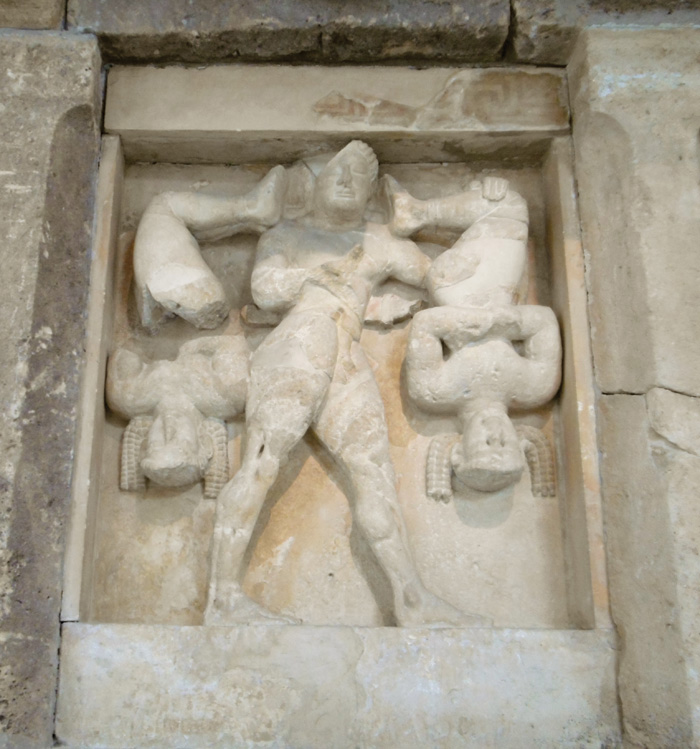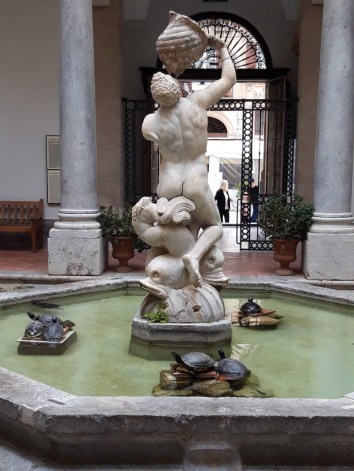
Oliver Gilkes explores a recently refurbished Sicilian museum. Sicily plays host to an unprecedented variety of archaeological sites and monuments, set in an extraordinary medley of landscapes. Combine this with Sicilian panache at cookery (very different from mainland Italy) and its wines, and a visit is a must for enthusiasts of Mediterranean archaeology. Superb museums display the artefacts from centuries of excavations on the island. One of the greatest reopened in 2017 following a decade-long hiatus, during which the Antonino Salinas Museum in Palermo, named after the early 20th-century archaeologist and numismatist, was reconstructed. New galleries include important Phoenician finds from western Sicily and, above all, the wonderful metopes and pediments from the temples of Selinunte, a major Greek colony on the south coast.

Selinunte – ancient Selinus – had, among its forest of shrines, one of the largest temples in the Greek world. Destroyed by the Carthaginians in 409 BC, its rows of columns collapsed centuries later and were reconstructed over the course of the last 200 years. The temple decorations ended up across the island in Palermo in the revamped gallery – and what magnificent finds they are! The metopes of a Greek temple were positioned up high in the frieze set between the triglyphs, those memories of ancient wooden buildings resembling the ends of beams with their three notches. They were carved, or painted, with appropriate schemes, setting out a visual programme of what a temple was all about. In Palermo, there are metopes from three noteworthy shrines: on the acropolis of the city temple Y (none of the dedications are truly known), which has a wonderful series of Archaic images; nearby temple C, perhaps dedicated to Hercules; and temple E, from the great external eastern sanctuary, where there is some evidence that it was dedicated to Hera. All were begun in the 6th century, though ‘Hera’ was still being built a century later. Once they were brightly painted; today, we see naked stone sculptures.

Sicilian sculptures Three examples show them off. From temple Y, we have the unsuspecting Phoenician princess Europa being borne over the sea to Cyprus by the philandering Zeus in the form of a bull: an abduction that set in motion a whole swathe of ‘Greek’ myths.

From ‘Hercules’ comes a delightful scene of the demi-god with the Cercopes, the Smurf-like creatures who were captured after trying to steal his club. As they were carried off upside down, they had a good view of Hercules’s naked backside and made appropriate comments. This made him laugh and, recovering his good humour, he released them. While both of these are in the Archaic style, from ‘Hera’ we have a later sculpture of about 470 BC. Not yet quite Classical in form, it shows several elements that Sicilian sculptors were to excel in, such as the use of two stones – local limestone for the main image, and fine Greek marble for the flesh. Here we are, witnesses, to the marriage of Hera and Zeus. The god’s sister, having fallen victim to her brother’s lusts, binds him to her in marriage. Zeus greedily grabs her arm, simultaneously playing footsie, while Hera, dressed as an innocent bride, pulls aside her veil.
It is a superb collection, superbly displayed. There is a cornucopia of other materials to be found behind the imposing façade of the ex-convent that houses them, past the ornamental fountain with its giant terrapins, and into the cool of the courtyard and gallery. One room of Phoenician finds is dedicated to the memory of Khaled al-Asaad, the Syrian archaeologist who died refusing to give up the locations of Palmyra’s treasures to ISIS. If in Palermo, do go along and pay tribute to heroes of the ancient world, and ours.

